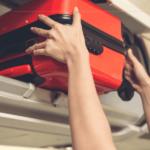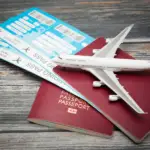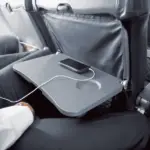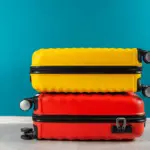A revolutionary approach to travel is gaining momentum across the globe as adventurous jetsetters embrace what’s being called “flying naked” – a term that has nothing to do with actual nudity and everything to do with extreme minimalism. The practice involves boarding flights with virtually no luggage – often just the clothes on one’s back and perhaps a small personal item containing essentials. As airlines continue to increase fees for checked baggage and even carry-on items, this ultra-light approach to travel is attracting attention not just as a money-saving tactic but as a philosophical shift in how we experience journeys.
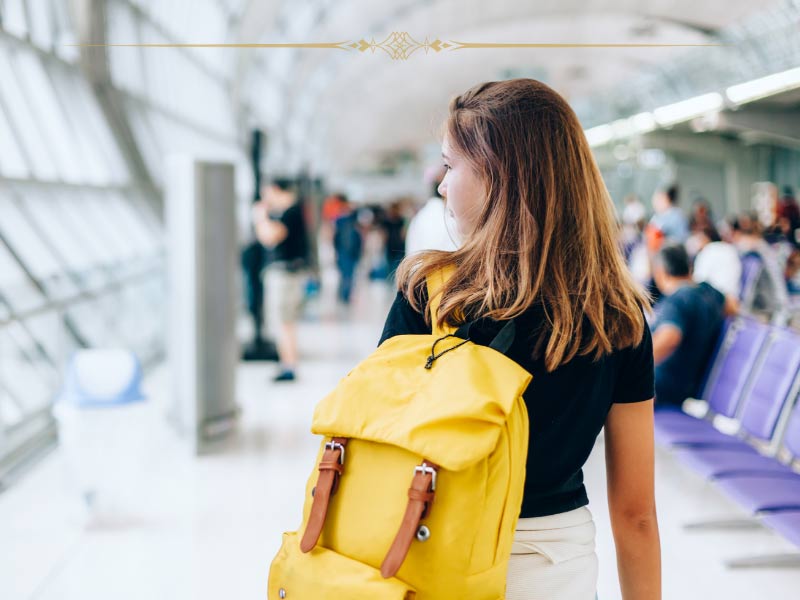
With millions of views across social media platforms, the trend represents a dramatic departure from traditional travel preparations that typically involve careful packing of multiple outfits and accessories. Instead, these minimalist travelers are demonstrating that with careful planning, creativity, and sometimes a bit of improvisation, there may be freedom in leaving it all behind.
The Evolution of Minimalist Travel
The concept of traveling extraordinarily light isn’t entirely new. For decades, certain travelers have experimented with reducing their luggage to absolute essentials. Business travelers making same-day return trips have long practiced versions of baggage-free travel, as have certain wealthy travelers who can afford to purchase or arrange for necessities upon arrival.
What makes the current movement notable is its expansion beyond these specialized circumstances into mainstream travel culture. The growing popularity of “flying naked” represents a confluence of several factors: increasing airline baggage restrictions, environmental consciousness, technological advances that make many physical items unnecessary, and a cultural shift toward experiences over possessions.
Early minimalist travel advocates argued that carrying less enhances the journey itself. By eliminating the physical and mental burden of luggage, travelers can move more freely between destinations, navigate transport systems with greater ease, and focus more on experiences than possessions. Today’s proponents build on this foundation while adding modern concerns about sustainability and practical responses to changing airline economics.
The term “flying naked” itself appears to have emerged from social media over the past year, offering a provocative and memorable descriptor for a practice that challenges conventional travel wisdom. The terminology has helped popularize what was once a fringe practice, bringing it into mainstream travel discussions.
Financial Motivations Behind the Movement
Perhaps the most immediate driver of the “flying naked” trend is financial. As airlines have unbundled their services, the cost of transporting personal belongings has become increasingly expensive. Budget carriers pioneered this approach, offering rock-bottom base fares while charging separately for everything from seat selection to baggage.
Many budget airlines now charge substantial fees even for small carry-on bags. Some charge $35-50 for a carry-on bag added at booking, with prices escalating sharply for additions made at the airport. For travelers seeking the absolute lowest cost journey, eliminating baggage entirely becomes an attractive option that can save $70-100 on a round-trip flight.
Major legacy carriers have increasingly adopted similar practices for their basic economy fares, creating situations where baggage fees can sometimes exceed the base airfare itself. This pricing structure has fundamentally altered the calculation for budget-conscious travelers, making “flying naked” an economically rational choice for certain types of trips.
The approach particularly appeals to younger travelers who prioritize frequency of travel over comfort or convenience. For this demographic, the ability to book more trips by saving on baggage fees outweighs the inconvenience of traveling without changes of clothing or toiletries.
The Practical Reality of Baggage-Free Travel
The practical implementation of “flying naked” varies considerably among its practitioners. For some, it means boarding with nothing more than a phone, wallet, and necessary travel documents tucked into pockets. Others include a small personal item such as a purse or slim backpack containing absolute essentials like chargers, medications, and perhaps a minimal toiletry kit.
For very short trips, some travelers simply wear the same outfit for the duration, perhaps complemented by small, packable items purchased at their destination or shipped ahead. Others rely on accommodation with laundry facilities to wash their single outfit overnight.
More elaborate approaches involve strategic layering of clothing for the flight, maximizing what can be worn rather than packed. Some travelers report wearing multiple shirts, pants, or even jackets during boarding, effectively “packing” on their bodies rather than in bags.
Technology plays a crucial role in making baggage-free travel feasible. Digital tickets, boarding passes, maps, guides, books, and entertainment eliminate the need for physical versions of these items. Cloud storage means travelers can access important documents from anywhere, and smartphones consolidate numerous formerly separate devices.
For those staying longer than a day or two, various strategies emerge. Some ship necessities to their destination in advance. Others budget for purchasing basic clothing and toiletries upon arrival, sometimes donating these items before returning home. For business travelers, some hotel services now offer wardrobe rental options, providing pressed business attire for the duration of a stay.
The Airport Experience Transformed
Travelers embracing this minimalist approach report a fundamentally different airport experience. Without bags to check or carry through security, the entire pre-flight process becomes streamlined. Security screening proceeds more quickly without bags to scan, boarding can be completed without struggling for overhead bin space, and arrival doesn’t involve waiting at baggage claim.
This transformation extends to the psychological experience of travel. Many report feeling a sense of freedom and lightness when moving through airports unencumbered by luggage. The stress of wondering whether a bag will fit overhead or arrive safely at the destination disappears, replaced by confidence in being self-contained.
For some destinations with efficient public transportation, baggage-free travel also simplifies the journey from airport to accommodation. Navigating trains, buses, or subways becomes considerably easier without wheeled luggage or heavy backpacks, allowing travelers to use systems that might otherwise be impractical with traditional luggage.
The approach also eliminates concerns about lost or delayed baggage—a significant source of travel anxiety. With nothing checked, there’s no possibility of arriving without essential belongings, which can be particularly valuable when traveling for time-sensitive events like business meetings or weddings.
Social Media Fuels the Movement
The dramatic rise of “flying naked” as a recognized travel approach owes much to social media, where travel influencers showcase their minimalist journeys. Videos demonstrating the experience of boarding with nothing but a small personal item have garnered hundreds of thousands of views, inspiring others to attempt similar feats.
These posts typically highlight the freedom and simplicity of baggage-free travel, often with dramatic visuals of travelers breezing past baggage claim areas or navigating complex transit systems with ease. The content frequently emphasizes cost savings from avoided baggage fees, presenting the approach as both financially savvy and liberating.
Some content creators document multi-day or even multi-week journeys with minimal belongings, demonstrating techniques for managing extended trips without traditional luggage. These include strategic use of accommodation laundry facilities, capsule wardrobes of versatile clothing items, and destination-specific purchasing strategies.
The algorithmic nature of social platforms has accelerated the trend’s growth, with content about “flying naked” being recommended to users interested in budget travel, minimalism, or travel hacks. This has created a self-reinforcing cycle where increased interest leads to more content creation, further popularizing the approach.
Airline Industry Response
The airline industry has observed this trend with mixed reactions. For carriers whose business models rely heavily on ancillary revenue from baggage fees, widespread adoption of baggage-free travel could potentially threaten a significant income stream. North American airlines alone collected over $7 billion in baggage fees last year, making this revenue crucial to their financial performance.
Some airlines have responded by becoming increasingly strict about personal item dimensions, ensuring that even small bags meet exact size requirements. Gate agents at certain carriers reportedly receive incentives for identifying oversized personal items that should be classified and charged as carry-on baggage.
Other airlines have adjusted their cabin configurations to accommodate changing passenger behavior. With more travelers bringing carry-on luggage to avoid checked bag fees, some carriers have redesigned overhead storage to maximize capacity. However, many older aircraft remain ill-equipped for a passenger complement where the majority bring substantial carry-on items.
The tension between passenger preferences and airline revenue models has occasionally resulted in public relations challenges. When one major North American carrier announced new restrictions on personal item dimensions with associated fees, the decision faced significant public backlash, including criticism from government transportation officials who characterized the move as targeting economically vulnerable travelers.
Limitations and Criticisms
Despite its growing popularity, “flying naked” faces legitimate criticisms and practical limitations. The approach works best for very short trips, travel to familiar destinations where the traveler has stored belongings, or journeys where purchasing necessities upon arrival is practical and economical.
For longer trips, the financial calculation becomes more complex. While saving on baggage fees initially seems economical, purchasing clothing and toiletries at the destination may ultimately cost more than the avoided fees. This is particularly true for travel to expensive destinations where retail prices exceed those at home.
The environmental impact also presents a mixed picture. While traveling lighter reduces fuel consumption through decreased aircraft weight, purchasing disposable items at destinations only to discard them before returning home potentially increases overall waste generation. Some critics characterize this as trading transportation emissions for consumer waste.
Accessibility represents another limitation. For travelers with medical needs requiring specific equipment or supplies, traveling without adequate baggage may be impractical or impossible. Similarly, those with children or specific professional requirements often cannot realistically eliminate luggage entirely.
Critics also point out that the approach may reinforce problematic aspects of consumption culture by normalizing the purchase and disposal of short-term use items rather than sustainable ownership and care of possessions. Some see this as contrary to authentic minimalism’s focus on reduced consumption overall.
Beyond Budget Travel: Philosophical Dimensions
For some practitioners, “flying naked” transcends mere cost-saving to embody philosophical perspectives on travel and consumption. These travelers view the practice as liberation from material dependencies that can distract from authentic experiences.
This philosophical approach emphasizes that travel fundamentally concerns experiencing new places, cultures, and perspectives rather than transporting one’s possessions from location to location. By eliminating baggage, these travelers aim to be more present and engaged with their surroundings rather than focused on maintaining and monitoring their belongings.
Some advocates draw connections to historical pilgrimages and journeys where travelers carried minimal possessions. They suggest that modern travelers have become burdened by expectations of constant outfit changes and access to full ranges of personal care products, arguing that these conveniences actually diminish the transformative potential of travel.
The approach also challenges conventional consumerist preparations for travel that often involve purchasing specialized equipment, clothing, and accessories for journeys. By demonstrating that meaningful travel experiences can occur without these purchases, “flying naked” practitioners question whether such consumption actually enhances travel.
Practical Tips for Aspiring Minimalist Travelers
For those intrigued by the concept but hesitant to attempt completely baggage-free travel, practitioners suggest several intermediate approaches. Beginning with short domestic trips rather than extended international journeys allows travelers to experiment with minimal packing in lower-risk scenarios.
Capsule wardrobes consisting of versatile, layerable clothing made from quick-drying fabrics that can be washed in hotel sinks represent another recommended strategy. Materials that resist odors and wrinkling while offering climate adaptability prove particularly valuable for minimalist travelers.
Researching destination resources in advance helps create viable minimalist travel plans. Identifying accommodation with laundry facilities, local stores for necessary purchases, and shipping options can transform an impractical journey into a feasible adventure.
Digital preparation plays a crucial role, with experienced minimalist travelers recommending comprehensive organization of necessary documents in secure cloud storage accessible from mobile devices. This includes not just travel documents but also any reference materials, maps, or guides that might otherwise require physical copies.
For those concerned about emergency situations, travel insurance that specifically covers replacement of essential items offers peace of mind. Some policies provide compensation for necessities when baggage is lost; similar coverage can support intentionally baggage-free travelers when unexpected needs arise.
The Future of Minimalist Travel
As airlines continue refining their business models around ancillary fees and passengers become increasingly adept at avoiding these charges, “flying naked” likely represents just one phase in the evolving relationship between carriers and customers. The approach seems poised to remain a niche but significant travel style rather than becoming the dominant paradigm.
The trend highlights deeper questions about what constitutes necessary travel preparations and how the experience of journeying between places relates to the possessions we carry. As technology continues reducing the need for physical items while environmental concerns grow more pressing, these questions will likely gain rather than lose relevance.
For the travel industry, the movement presents both challenges and opportunities. While potentially threatening baggage fee revenue, it also creates openings for innovative services catering to minimalist travelers—from expanded clothing rental options to destination delivery services for travel essentials.
What began partly as a practical response to airline fee structures has evolved into something more significant: a reconsideration of travel’s material dimensions and an exploration of how reduction might enhance rather than diminish the journey. Whether viewed as extreme frugality or philosophical statement, “flying naked” asks meaningful questions about what we truly need to carry as we move through the world.
As one practitioner described the experience of boarding a flight with nothing but the essentials that fit in their pockets, “It transforms something as complex as international travel into something that feels as simple as hopping on a local bus—except this bus takes you to another world entirely.”

